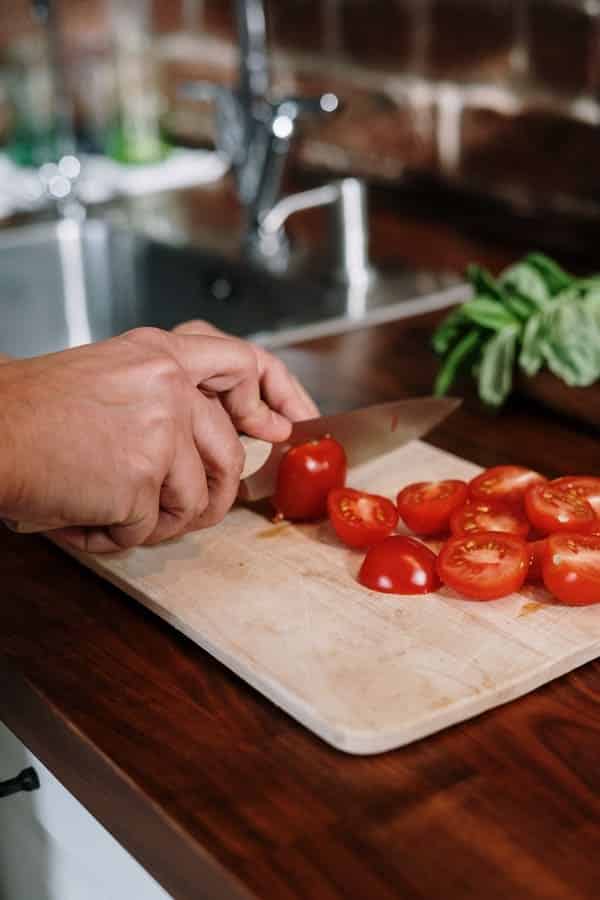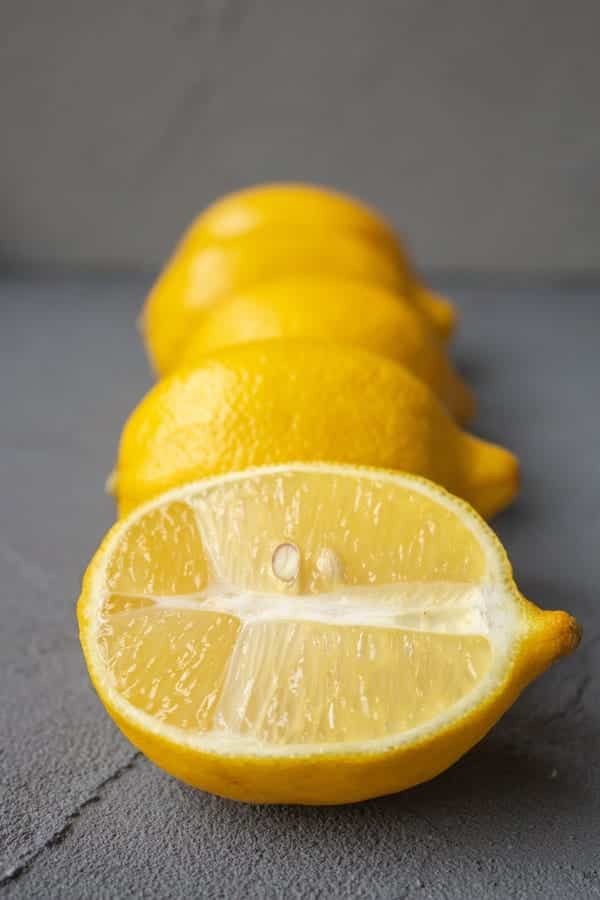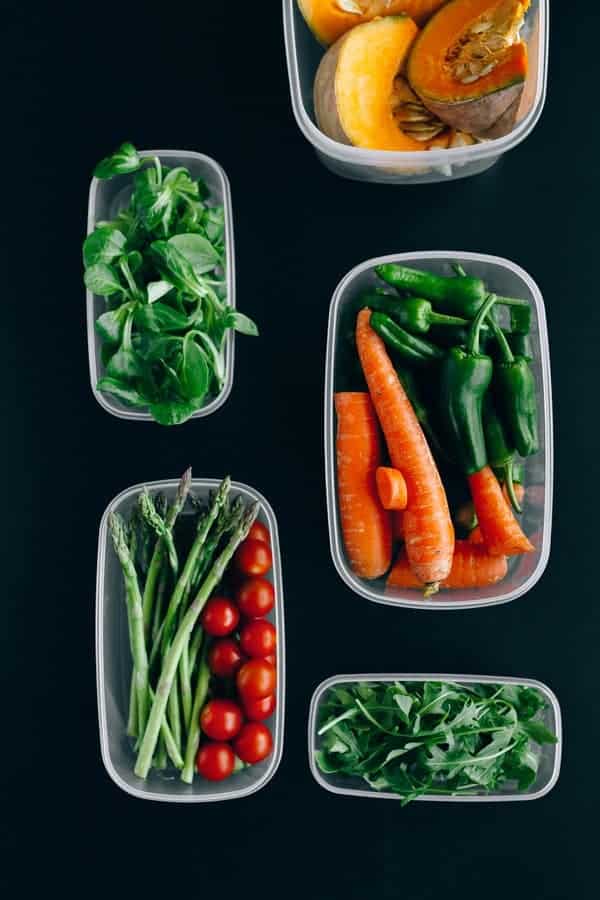Tomato sauce can leave a nasty stain on your lovely plasticware. That can make for an embarrassing moment when you want to invite friends over for a lunch or dinner party.
But there is hope.
There is no need to think that your containers have to head for the bin. The orangey-red stains can be removed.
Let’s take you through 4 ways in which you can get rid of the tomato sauce stains from your plastic. Then we’ll show you how to prevent them from coming back.
There may be affiliate links in this article. You can read more about this in my disclosure.
4 ways to get rid of tomato sauce stains

Tomatoes contain lycopene, which is a natural antioxidant. It gives the tomato its red color and studies have shown some evidence that it offers a range of health benefits, such as:
- Promoting bone health
- Aiding in maintaining a healthy blood pressure
- It reduces the risk of cancer.
- Decreases the level of bad cholesterol while boosting good cholesterol
- It acts as a pain reliever.
The downside to lycopene is that it stains. Now your pristine plasticware is looking a little sad.
However, you can make it look beautiful and clean again. Use one of the following four methods:
1. Vinegar
Vinegar is a standard go-to when it comes to cleaning. It is so versatile and can remove grease, grime, and… tomato sauce stains.
It’s all thanks to the acidity of the vinegar. To try this method, use distilled white vinegar (it’s great at busting through the dirty buildup).
- Mix ½ a cup of vinegar with an equal part of hot water.
- Pour the mixture into your plasticware.
- Give the liquid a good stir. Another option is to place the lid on the container and shake it. Make sure that you aren’t too gentle!
- Let the container and the solution rest for several hours.
- Wash it out with some dish soap.
- Dry the container with a cloth or let it air dry.
2. Dish soap
You may think that popping your containers into a dishwasher will be a convenient way to rid them of stains. Sadly, it won’t.
However, using dish soap or liquid can work wonders to clean up your plastic. The chemicals that are in the soap are designed to break through the stubborn build-up.
- Spray several squirts of your dish soap into the container you want to clean.
- Then add a quarter of a liter (about a cup) of hot water.
- Take a small brush or use the coarse side of a sponge and work the soapy water over the stains.
- When you are done, rinse out the container and fill it with hot water.
- Leave it for several hours.
- Rinse the container once more, and you’re done.
An alternative method to this is:
- Give the plasticware a standard hand wash.
- Allow it to air dry
- Place it in the sunlight which will naturally bleach away the stain.
The only drawback to this solution is that it can take a few days to get rid of the stain.
If you’re a patient person, that might not be an issue. For those who aren’t so willing to wait, it can be frustrating.
3. Baking soda
Baking soda is a non-toxic, natural cleanser. That’s because of its caustic properties. Another great thing about baking soda is that it absorbs odors.
Stick your nose into that bowl you left last night’s spaghetti bolognese in and have a whiff. It’s not a bad smell, but still something you don’t want lingering around.
So grab your baking soda and get ready to attack the tomato stains. Here we give you a couple of options to try.
For the first method, you will need a ¼ cup of hot water and 1 cup of baking soda.
- Combine the baking soda and water into the container. Stir until everything thickens.
- Apply the solution evenly throughout the container.
- Scrub the affected areas with a small brush (a toothbrush is perfect).
- Pour hot water into the container and let it sit for several hours.
- Rinse it out with dish detergent and then dry.
The second method is a mix of baking soda, water, and dish soap (it’s taken from Martha Stewart’s site):
- Combine two tablespoons of baking soda with a teaspoon of water. Add in ¼ teaspoon of dish soap.
- This is similar to step 2 in the first method. Mix everything into a paste.
- Smear the paste over the inside of the container and let it sit for a quarter of an hour or more.
- Rinse it out with hot water.
If the stain isn’t completely gone, then repeat the process.
4. Dish soap and sugar
The best sugar to use for this is granulated.
- If your container is 5 square inches, add ⅕ of a cup (40g) of sugar into the middle of your container. For bigger containers, look at doubling the amount of sugar.
- Add two teaspoons of dish soap to the sugar.
- Fill up the container with cold tap water. You only need to add enough water to cover the stained area.
- Allow the sugar, dish soap, and water to foam up. Then wait for 10 minutes.
- Rinse out the container and then dry it.
A bonus method (with lemons)

Lemon juice is a natural bleach. It not only removes stains, but it can kill any nasty germs or bacteria that are lurking on a surface.
All you need to do is cut the lemon in half, then rub it over the stain. Softly squeeze the lemon as you are working on the stain.
This allows the juice to flow. You only have to scrub the area for a minute (some people recommend leaving the juice for 15 to soak into the plastic).
Allow the container (or other plasticware) to dry naturally. Finish off the process by washing it out with dish soap and water.
Another bonus method (hydrogen peroxide)
Traditionally, hydrogen peroxide was used as an antiseptic, but then it became an equally effective stain remover.
So, if you have some of this chemical laying around, use it to take care of those pesky tomato stains.
Get a bowl and fill it with water, then mix in your hydrogen peroxide. Submerge your plasticware into the water and allow it to soak for a few hours (leaving it overnight is ideal).
Give the plastic several thorough washes to remove the hydrogen peroxide, as it can cause illness.
[amazon box=”B07NFTM4ZY” template=”vertical”]Preventing stains
People always say that “prevention is better than the cure”. It’s so true! Now that you have rid your plastic of those horrible tomato stains, take measures to stop them from occurring again.
There are several ways you can protect your plastic from staining.
Nonstick spray
For this, you can use any non-stick kitchen spray. Before you place your tomatoes (or leftovers with tomato sauce) in the container, give it a good coating of spray.
This builds a barrier between the plastic and your food.
[amazon box=”B005GDUBBY” template=”vertical”]Cling wrap
Cling wrap has numerous applications: it keeps food fresh and protected; it prevents dough and flour from sticking to your rolling pin while making cookies, and it can keep your plastic from becoming soiled by tomatoes!
Lay your cling wrap over the top of your container and then cut it to the right size. You want it to just come over the rim of the container.
Then gently push it into the contours of the plastic. Add in your food. Job done!
One word of caution: check that you haven’t ripped the cling wrap as you positioned it in the container.
[amazon box=”B002HNW6PK” template=”vertical”]Another option is to use baking paper. Follow the same method as above.
The best choice is non-stick parchment paper.
Again, check that the paper isn’t ripped or torn in the container. Use good quality paper that is absorbent and won’t have the tomato juices bleeding through.
[amazon box=”B08NYGWR4S” template=”vertical”]Butter it up
This works similarly to the non-stick cooking spray. The grease and fat in butter create a film over the plastic.
Get a piece of baking paper and dab it into the butter. Next, smear the butter over the inner surface of the container. Get a light, even coat, then deposit your food inside.
After you have emptied the container (that is, you ate what was inside), wash out the butter with hot water and dish soap.
Your plasticware looks amazing!

Tomatoes, thanks to the lycopene, can become an enemy to your plastic containers. The stains they leave have you wondering what to do.
Now you have several methods up your sleeve that will enable you to keep your plastic looking its best. Be careful when using hydrogen peroxide as it can be harmful.
You also now know how to stop the stains from returning thanks to non-stick spray and cling wrap.
There is no need anymore for you to contemplate throwing your plastic containers away. That’s such a feeling of relief.
All that is left for you to do is to consider what meal you can make with those tomatoes in your refrigerator.



